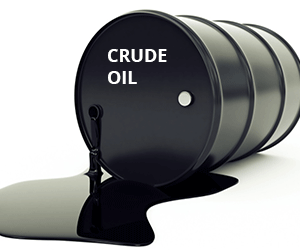The price of Brent crude is forecast to average $92 per barrel in 2023, down from a projected $100 per barrel in 2022, the World Bank’s October 2022 Commodity Markets Outlook has revealed.
It will however ease to $80 per barrel in 2024.
According to the report, oil consumption is expected to continue to increase by just under 2% in 2023 as China gradually reopens, and “as switching from natural gas to oil continues, especially in electricity generation”.
Again, a sharper-than-expected slowdown in global growth and continued Covid-19 restrictions in China are the key downside risks to oil consumption.
During previous global recessions oil demand has declined by about 2% in the first year and 1% in the second, although with wide variation.
The report further said oil markets are expected to tighten over the next few months as additional sanctions restrict exports from Russia, releases of oil from strategic reserves in several countries come to an end, and as OPEC+ members cut production.
This will more than offset the effect of rising production in a few countries, primarily the United States. The outlook is subject to numerous risks, especially on the supply side.
First, production in the United States could disappoint as producers prioritise returning cash to shareholders over increasing output, and higher input costs constrain new investment.
Second, the outlook for Russia’s production depends on the impact of trade measures. Russia’s exports next year could be as much as 2.0 million barrels per day lower, as the EU embargo on Russian oil and oil products (as well as restrictions on access to EU insurance and shipping services) comes into effect.
The proposed G7 oil price cap could also affect the flow of oil from Russia, but it is an untested mechanism and would need the participation of large emerging market and developing economies to achieve its objectives.
Third, releases of crude oil from strategic reserves, including the U.S. are due to end this year; while these could be extended further, it would risk leaving strategic inventories at very low levels.
Latest Stories
-
CAF Confederation Cup: Dreams face Zamalek, RS Berkane take on holders, USM Algiers
28 mins -
PURC could have found a better approach to settle issues with ECG – Dr Manteaw
38 mins -
CAFCC: John Antwi sure of positive result against Zamalek
56 mins -
I’ll choose Osofo Kyiri Abosom as my running mate over Akua Donkor – Prophet Kumchacha
56 mins -
LPG prices surge in Ghana, raising concerns over tax impact
1 hour -
I commend PURC for taking courageous step to fine ECG board members – Kwame Pianim
2 hours -
Financing assurance secured from bilateral creditors to aid 2nd review funding for Ghana – IMF Africa head
2 hours -
Man who set himself on fire outside Trump’s Manhattan hush money trial dies
3 hours -
Fuel purchase issues have nothing to do with personal interest – Egypa Mercer
3 hours -
ISRQ2024: Theorose School wins Championship with 0.5 points, heads to Canada
3 hours -
Use your voice, talents, skills to advocate for positive change – UniMAC VC tells graduates
3 hours -
Livestream: Newsfile discusses ‘dumsor’, Ex-MASLOC CEO jail and Election 2024
3 hours -
Otumfuo STEM Festival launched to find problem-solvers, promote science education
3 hours -
Irene Logan ties the knot in colourful ceremony
3 hours -
Alliance with other parties, not a merger – Alan Kyerematen
4 hours

